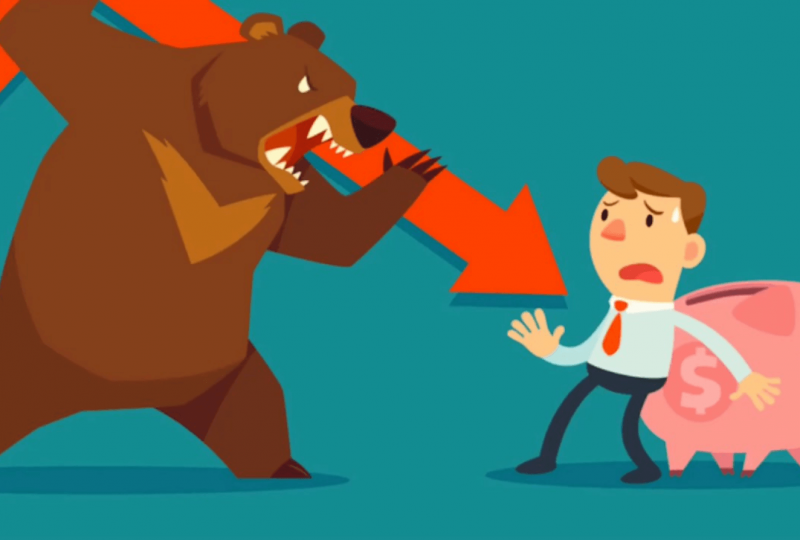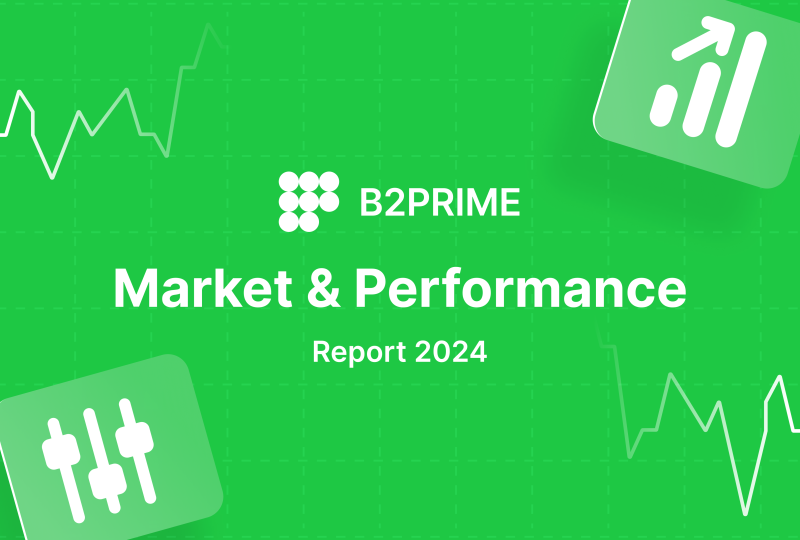Expert Opinion: The Bear Market Is Already in Its Third Inning. Stay Calm and Defensive
May 22, 2022

The S&P 500 is on the verge of a 20% drop from its high. The overwhelming majority of its members have already done so. Large areas of consumer cyclical stocks and financials are down considerably more. The question of whether we are in an "official" bear market at this moment is largely conceptual. Suppose it moves like a duck. The proverb "to know where you're going, you must first know where you've been" surely fits here. From the end of 2018 to the end of 2021, the Fed relaxed monetary policy by 850 basis points through interest rate cuts and a larger balance sheet.
It obliterated the stock risk premium in the process. It's no surprise that asset values rose, with the stock market tripling in that time period—a that's a 2-standard deviation event! And who knew that the world's first epidemic in nearly a century could make so many people so wealthy? Should we give it another shot?
However, the enlarged price-to-earnings multiple—"animal spirits" — accounted for 70% of that three-year bull market, while earnings growth was a two-bit player, accounting for the remaining 30%. Historically, such proportional contributions have been reversed: 70% profits and 30% multiple expansion.
If that were the case, the S&P 500 would have peaked closer to 3,600 than 4,800 at the start of this year. That is the P/E multiple's power: At recent high valuation levels, the P/E multiple is five times more potent than earnings momentum, basis point for basis point.
So, in these four really difficult months, we have begun to see the mean-reversion process take hold in terms of the multiple now decreasing. As it should be, given the Fed's tightening of policy and threats to do far more. In reality, assuming the Fed accomplishes everything it promises, raising rates and lowering its balance sheet, the de facto tightening will be roughly 400 basis points.
This compares to 180 basis points in 2018 and 315 basis points for the whole 2015-2018 cycle—an increase of 85 basis points in one year!
This contrasts to rate increases of 175 basis points in 1999-2000 (before the crisis), 300 basis points in 1994, and 313 basis points in 1988-89. (ahead of that recession). The last time the Fed was this active in such a short period of time was in the early 1980s.
How appropriate. In response to a question from Sen. Richard Shelby (R, Ala.) during the semi-annual congressional hearing in early March, Jay Powell stated that Paul Volcker was the greatest economic public servant of all time.
Volcker is now venerated for slaying the inflation demon, but he was hated in the early 1980s for setting the circumstances for back-to-back recessions and a massive bear market. People nowadays wonder where the "Powell place" is. In August 1982, the "Volcker put" was an 8x multiple. You don't want to do the arithmetic on that, regardless of your profits prediction today.
The next shoe to drop is earnings. When it occurs, no one will be disputing whether we are in a bear market or not. There has never been a GDP recession without an earnings slump, period. Everyone dismisses the first-quarter -1.4 percent annualized real GDP drop as an exception, but I don't see any signs of recovery in the current quarter. Indeed, the monthly data has such a negative forward momentum that the handoff to the second quarter is -1%. Monthly GDP in real terms fell 0.4 percent in March and has been flat or declining for the prior five months.
From October through March, the "resilient" US economy contracted at a 2.4 percent annual pace. And this has only happened in the National Bureau of Economic Research-defined recessions in the past. The April nonfarm payroll report appeared strong on the surface, but beneath the surface, full-time employment fell by the most since April 2020, and small-business employment, which has always been a reliable indicator of cycle turning points, has dropped by more than 100,000 in the last three months.
Furthermore, "inflation" has pushed real disposable personal income, which accounts for about 80% of the GDP, into a recession of its own, declining in six of the last seven months at a -4.5 percent annual rate. Consumer spending will follow suit as sure as night follows day. The Fed will do everything possible to correct the issue, but the medication will be bitter because the inflation shock has been replaced with an interest rate shock. Mortgage and property markets have already reacted in kind.
The stock market has made a lot of effort to price in a recession, but it is now discounting one-third of the chances. There's still work to be done. The inflation shock is almost entirely exogenous. Few discuss how fiscal policy contraction alone will serve to address the demand side by the end of the year. Is it widely known that if food and energy inflation does not fall, the Fed will have to eat a significant hole in the remaining 80% of the pricing pie in order to return to 2% inflation?
The Fed would have to create demand circumstances that would cause core inflation to fall to -1.8 percent – something that has never happened before! With the supply curve so inelastic, achieving 2% inflation would need a recession that would reduce real GDP by more than 3% and push the unemployment rate back to 7%. This is the kind of demand devastation that the Fed would need to win the battle against supply-side inflation, which is mostly produced by China's never-ending lockdowns and Russia's conflict in Ukraine.
We developed models to assess how financial conditions would have to tighten if the Fed is serious about hitting its 2% inflation objective. If you are still trading risk assets on the long side, you will not like the answer: 700 basis point spreads on high yield bonds (another 250 basis points to go) and the S&P 500 at 3,100. (another 20 percent downside). This makes excellent sense given that the S&P 500 has traditionally declined by 30% during recessionary bad markets.
The first 10% before the recession as the downturn is discounted, followed by the following 20% for the first three-quarters of the recession. However, keep in mind that there is a lot of variation around that "average." We must recognize that, with the ongoing epidemic and the conflict in the Middle East, we are approaching an era of extended heightened uncertainty. The earnings slump might collide with additional market multiple reductions. So, my hope is that the 3,100 "trough" proves to be excessively optimistic. Yes, you read that correctly.
Finally, we must consider the probability. Since 1950, the Fed has gone through 14 tightening cycles, 11 of which have resulted in a recession and a bear market in the stock market. That's an almost 80 percent chance right there.
We may definitely hope for a "soft landing" this time, but in my 35 years in this business, I've seen that hoping is rarely an efficient investing approach. The backdrop is one of liquidity and economic cycle peak, and what follows is the natural expulsion of excesses (meme stocks, cryptocurrencies, speculative Nasdaq 100, even residential real estate, which is in its own price bubble), and then... the rebirth. Being in denial serves no use. All of this is part of the cycle, and the tipping point occurred some months ago.
When it comes to the bear market, we're most likely in the third inning of a baseball game. My recommendation is to ignore the promoters, shills, and mountebanks. Keep your investing strategy cool, methodical, and defensive. That includes beaten-down long-term Treasuries, cash, gold, and only sectors of the equity market with modest connections to economic activity.
Expert Opinion:
“This is an excellent piece. One of the best I have read lately. It squares with what Larry Summers has been saying for quite some time now. It also incorporates some of what Jeremy Grantham has been warning about. At this point you wade into the investment sea at your peril. Better to wait until there is a greater washout. So far this is the early stage of a typical bear market decline. What many fail to realize is that the amount of tightening required to bring inflation under control is going to be much greater than most anticipate. Rosenberg recognizes this. Unfortunately, the only cure for inflation is going to be a Fed induced recession that pitches people out of work and drives down demand and prices. While the Fed continues to talk about a soft landing, based on probability that is not likely in the cards.”
LEWIS FLEISHMAN
Barron’s
If you want to suggest your news and share your professional comments for commercial offers DM us: [email protected]




